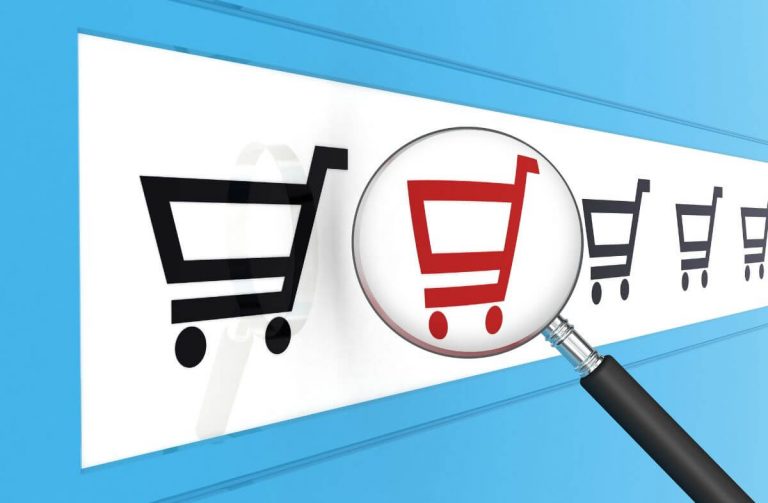If you’re running an online store, you know how important it is to monitor your ecommerce metrics. But with so many different metrics to track, it can be hard to know where to focus your attention. In this article, we’ll cover the ten ecommerce metrics that every ecommerce manager should be focused on. We’ll detail what these metrics mean and why they play a key role in shaping your marketing strategy.
What are eCommerce Metrics?
Before we dive into the specific metrics, let’s start by defining what an eCommerce metric is. In a nutshell, eCommerce metrics are measurements of performance and activity associated with your eCommerce business. They provide insight into how well your business is doing, and can be used to identify areas for improvement.
For example, one of the most important eCommerce metrics is sales. If you’re tracking your sales, you’ll be able to see how many products you’ve sold, which products are selling best, and what your total revenue is. This information can help you make decisions about how to optimize your business, such as which products to focus on and how to price them.
12 Critical eCommerce Metrics You Must Track
Now that you have a better understanding of what eCommerce metrics are, let’s take a look at some of the most important metrics that you should be tracking.
1. Customer Acquisition Cost (CAC)
Customer Acquisition Cost (CAC) is the total cost of acquiring a new customer. This metric is essential for businesses to track because it helps them determine the profitability of their marketing campaigns. To calculate CAC, businesses need to divide the total cost of their marketing campaign by the number of new customers acquired during that period.
2. Conversion Rate
Your conversion rate is the percentage of visitors who complete a desired action on your website, such as making a purchase or signing up for a newsletter. This metric is crucial because it tells you how effective your website is at converting visitors into customers.
To measure your conversion rate, you can use tools like Google Analytics or Hotjar. These tools will show you how many visitors are completing the desired action, and how many are dropping off before doing so.
3. Average Order Value (AOV)
Your average order value (AOV) is the average amount of money that customers spend per order. This metric is important because it tells you how much each customer is spending on average, as well as how much you can expect to make from each sale.
To calculate your AOV, simply divide your total revenue by the number of orders. This will give you the average amount spent per order.
4. Cart Abandonment Rate
Your cart abandonment rate is the percentage of visitors who add items to their cart but do not complete the purchase. This metric is important because it shows you how many potential customers are leaving your website without making a purchase.
To measure your cart abandonment rate, you can use tools like Hotjar or Google Analytics. These tools will show you how many visitors are adding items to their cart, and how many are leaving without completing the purchase.
5. Customer Retention Rate
Your customer retention rate is the percentage of customers who make repeat purchases. This metric is important because it shows you how successful you are at turning customers into long-term customers.
To measure your customer retention rate, you can use tools like Hotjar or Google Analytics. These tools will show you how many of your customers are returning to make additional purchases.
6. Customer Lifetime Value (CLV)
Your customer lifetime value (CLV) is the total amount of money that a customer will spend on your products over the course of their relationship with your business. This metric is critical for businesses to track because it helps them determine the profitability of their customer base and identify opportunities for upselling and cross-selling.
To calculate CLV, businesses need to multiply the average purchase value by the number of purchases per year, multiplied by the average customer lifespan.
7. Cost per Acquisition (CPA)
Your cost per acquisition (CPA) is the amount of money that you spend to acquire a new customer. This metric is important because it tells you how much you’re spending to acquire new customers, and how effective your marketing efforts are.
To calculate your CPA, you can use a tool like Google Analytics. This tool will show you how much you’re spending on each customer acquisition, as well as how much revenue you’re generating from each acquisition.
8. Churn Rate
Churn Rate is the percentage of customers who stop doing business with a company over time. This metric is essential for businesses to track because it helps them identify why customers are leaving and take steps to address the underlying issues. To calculate the churn rate, businesses need to divide the number of customers lost during a period by the number of customers at the beginning of that period.
9. Customer Satisfaction
Your customer satisfaction is a measure of how satisfied customers are with your products and services. This metric is important because it tells you how successful you are at delivering an excellent customer experience.
To measure your customer satisfaction, you can use a tool like Hotjar. This tool will show you how satisfied your customers are with your products and services, as well as how likely they are to recommend your business to others.
10. Net Promoter Score (NPS)
Net Promoter Score (NPS) is a metric that measures the likelihood of a customer recommending a business to others. This metric is essential for businesses to track because it provides insights into customer loyalty and satisfaction. To calculate NPS, businesses need to ask customers to rate their likelihood of recommending the business on a scale of 0 to 10. Customers who rate the business as 9 or 10 are considered promoters, while those who rate it as 0 to 6 are detractors. The NPS is calculated by subtracting the percentage of detractors from the percentage of promoters.
11. Social Media Engagement
Your social media engagement is a measure of how active your customers are on your social media channels. This metric is important because it tells you how successful you are at engaging with your customers on social media.
To measure your social media engagement, you can use a tool like Hotjar. This tool will show you how many likes, shares, and comments your posts are receiving, as well as how many people are following and interacting with your social media accounts.
12. Return on Investment (ROI)
Your return on investment (ROI) is the amount of money that you’re making compared to the amount of money that you’re spending. This metric is important because it tells you how successful your business is at generating a return on your investments.
To calculate your ROI, you can use a tool like Hotjar. This tool will show you how much money you’re spending and how much money you’re making, allowing you to easily measure your ROI.
How Cluster Can Help Sellers
From 17 globally tracked channels including Amazon, Walmart.com and eBay, over 1 billion products analyzed, over 23 million brands analyzed and over 85,000 digital POS data providers, we’re providing the most accurate eCommerce data so enterprises can know more to grow more. Book a demo now.




